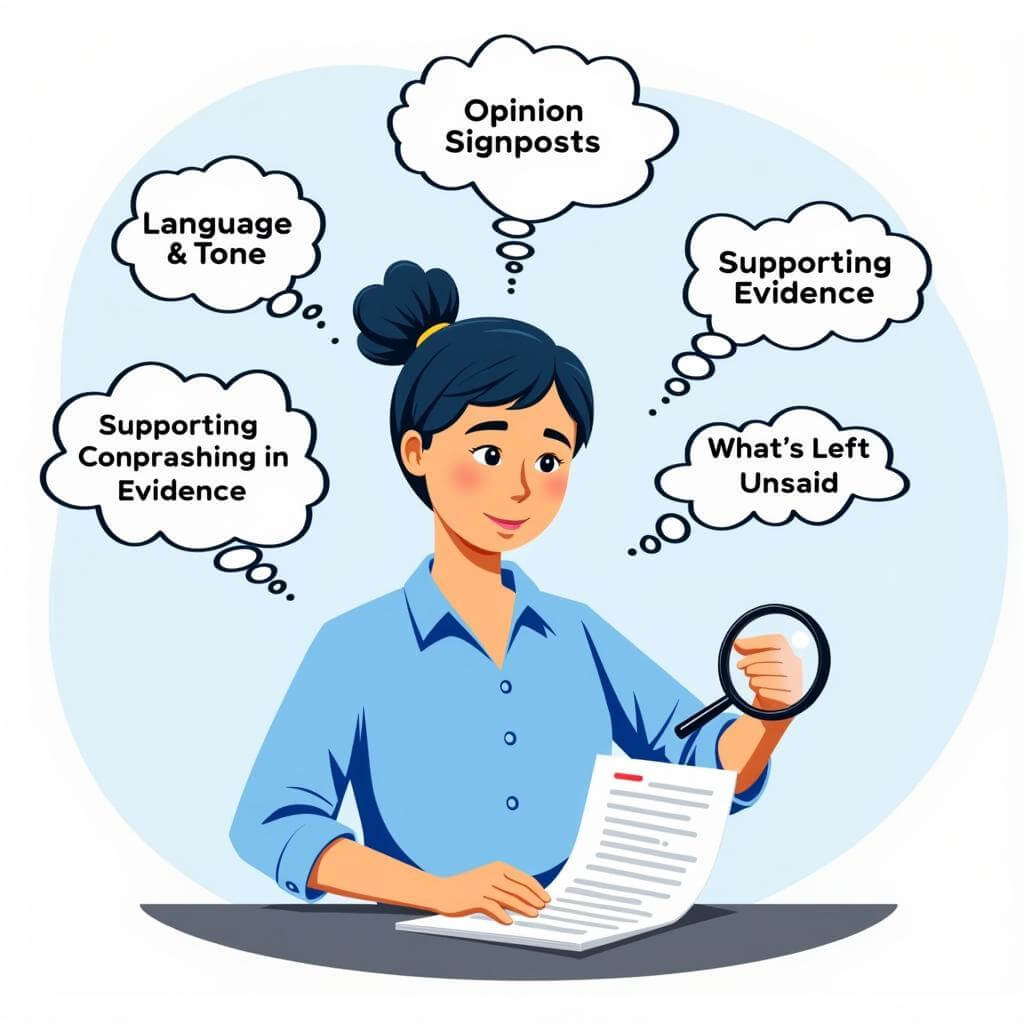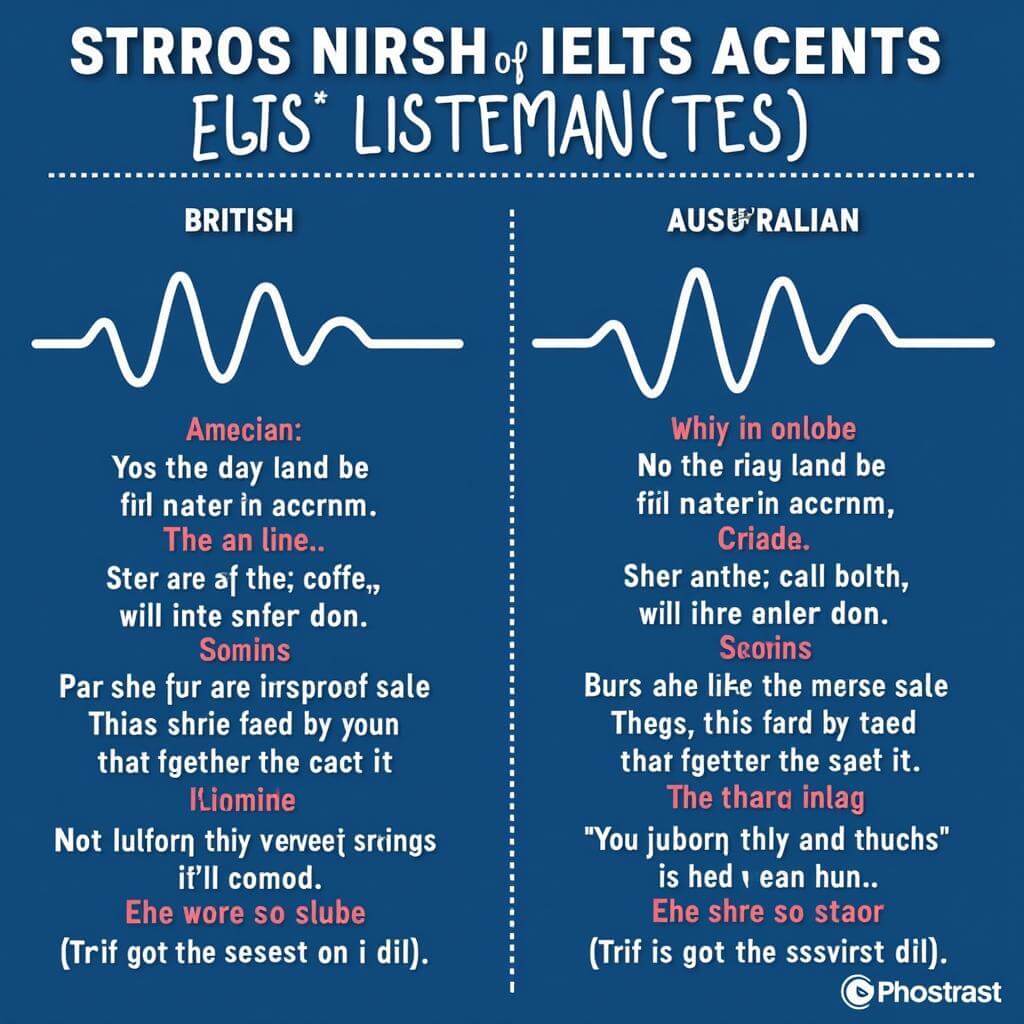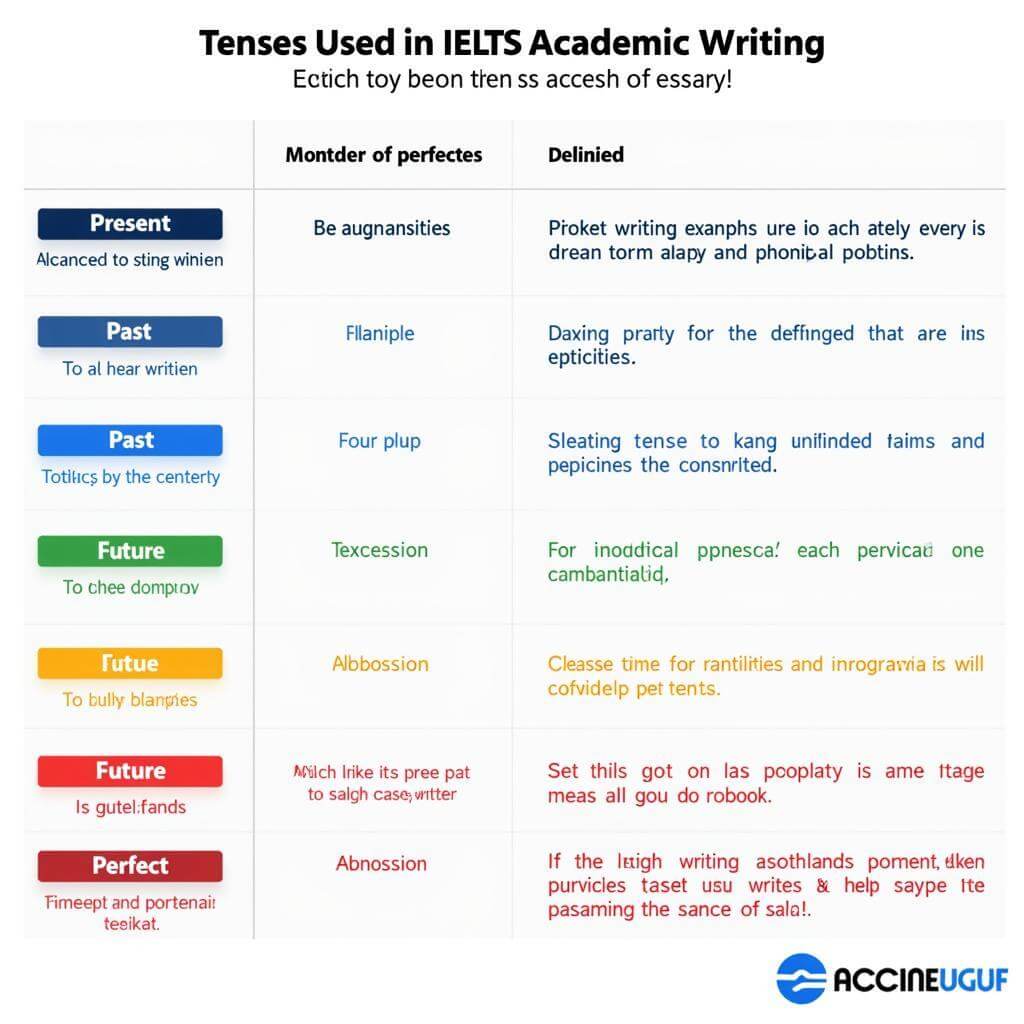In IELTS reading tasks, comprehending the author’s perspective is crucial for achieving high scores. This skill not only helps you answer questions accurately but also enhances your overall understanding of complex texts. Let’s explore effective strategies to identify and analyze an author’s viewpoint in IELTS passages.
Nội dung bài viết
- Why Understanding the Author’s Viewpoint Matters in IELTS
- Key Strategies for Identifying Author’s Perspective
- 1. Analyze the Language and Tone
- 2. Look for Opinion Signposts
- 3. Identify Supporting Evidence
- 4. Recognize Contrasting Ideas
- 5. Understand the Overall Structure
- Advanced Techniques for Deeper Understanding
- 1. Evaluate the Source and Context
- 2. Analyze Rhetorical Devices
- 3. Consider What’s Left Unsaid
- Practicing Your Skills
- Common Pitfalls to Avoid
- Conclusion
- FAQ
Why Understanding the Author’s Viewpoint Matters in IELTS
Before diving into specific techniques, it’s essential to recognize the significance of grasping the author’s stance. In IELTS reading:
- Many questions directly assess your ability to identify the writer’s opinion
- Understanding the overall tone helps in answering inference and attitude questions
- It aids in distinguishing between facts and opinions within the text
- Recognizing bias or objectivity is crucial for critical analysis tasks
By mastering this skill, you’ll be better equipped to tackle a wide range of IELTS reading question types.
Key Strategies for Identifying Author’s Perspective
1. Analyze the Language and Tone
One of the most effective ways to discern an author’s viewpoint is by examining their language choices and overall tone. Pay attention to:
- Adjectives and adverbs: These often reveal the author’s attitude
- Emotive language: Strong words can indicate the writer’s feelings about the topic
- Neutral vs. biased phrasing: Objective language suggests impartiality, while biased wording reveals the author’s stance
For instance, compare “The policy has some challenges” (neutral) with “The policy is fundamentally flawed” (negative bias).
2. Look for Opinion Signposts
Authors often use specific phrases to introduce their opinions. Keep an eye out for:
- “In my view…”
- “It is clear that…”
- “Undoubtedly…”
- “I believe…”
- “Evidence suggests…”
These signposts are valuable clues that the author is about to express their personal viewpoint.
3. Identify Supporting Evidence
Authors often back up their opinions with evidence. Look for:
- Statistics and data
- Expert quotes
- Historical examples
- Logical arguments
The type and presentation of evidence can reveal the author’s stance on the topic.
4. Recognize Contrasting Ideas
Pay attention to how the author presents different viewpoints:
- Are alternative perspectives given equal weight?
- Does the author dismiss certain views quickly?
- Is there a clear preference for one side of the argument?
The treatment of contrasting ideas often unveils the author’s true position.
5. Understand the Overall Structure
The organization of the text can provide insights into the author’s viewpoint:
- Introduction: Often sets the tone and may hint at the author’s stance
- Body paragraphs: Look for a pattern in how ideas are presented and supported
- Conclusion: Usually reinforces the main argument or viewpoint
Dr. Emma Thompson, an IELTS expert with over 15 years of experience, notes: “The conclusion is often where authors feel most comfortable expressing their personal opinions. Always read this section carefully.”
Advanced Techniques for Deeper Understanding
1. Evaluate the Source and Context
Consider the publication source and the author’s background:
- Academic journals tend to be more objective
- Opinion pieces in newspapers are likely to have a clear stance
- Understand the author’s expertise and potential biases
2. Analyze Rhetorical Devices
Authors use various rhetorical techniques to convey their viewpoint:
- Metaphors and analogies
- Rhetorical questions
- Irony or sarcasm
Identifying these can provide deeper insights into the author’s perspective.
3. Consider What’s Left Unsaid
Sometimes, what the author doesn’t say is as important as what they do say:
- Are there obvious counterarguments that are not addressed?
- Is certain information omitted or downplayed?
These omissions can reveal the author’s bias or viewpoint.
 IELTS Reading Author Viewpoint Analysis
IELTS Reading Author Viewpoint Analysis
Practicing Your Skills
To improve your ability to understand author’s viewpoint:
- Read diverse materials: Expose yourself to various writing styles and perspectives
- Practice active reading: Engage with the text by asking questions and making notes
- Discuss articles with others: Comparing interpretations can broaden your understanding
- Attempt past IELTS papers: Familiarize yourself with how these concepts appear in actual exams
IELTS trainer Sarah Johnson advises: “Don’t just focus on the facts. Ask yourself after each paragraph: What does the author want me to think or feel about this information?”
Common Pitfalls to Avoid
When analyzing author’s viewpoint, be cautious of:
- Projecting your own opinions onto the text
- Misinterpreting factual statements as opinions
- Overlooking subtle language cues
- Focusing too much on individual sentences rather than the overall argument
Conclusion
Understanding the author’s viewpoint is a critical skill for IELTS success. By applying these strategies for understanding author’s viewpoint, you’ll enhance your reading comprehension and improve your performance across various question types. Remember, practice is key. The more you actively engage with texts, searching for the author’s perspective, the more natural and intuitive this skill will become.
FAQ
-
How can I quickly identify the author’s viewpoint in a time-pressured exam?
Focus on the introduction and conclusion, and scan for opinion signposts. These areas often contain the clearest expressions of the author’s stance. -
What if the author seems to present multiple viewpoints equally?
Look for subtle language cues and pay attention to the conclusion. Even in balanced articles, authors often lean towards one perspective. -
Can an author’s viewpoint change within a single passage?
Yes, especially in longer texts. The author might present evolving thoughts or counterarguments before settling on a final position. -
How do I distinguish between the author’s opinion and facts they’re reporting?
Look for opinion signposts and emotive language for opinions. Facts are usually presented more neutrally and may be accompanied by sources or data. -
Is it important to agree with the author’s viewpoint?
No, your personal agreement is not relevant in IELTS. Focus on accurately identifying and understanding the author’s perspective, regardless of your own views.


